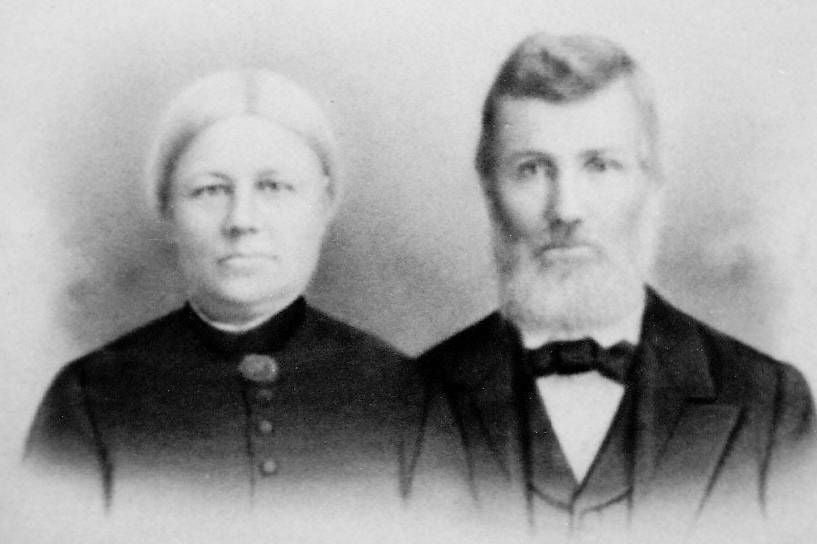Dear Minnesota - Christine Lynn Marcotte
Christine Lynn Marcotte shares a letter about the Boxell family's journey westward after immigrating from England

Dear Minnesota,
My ancestors, like so many others, moved west. After a few generations, the Boxells landed in Howard Lake, Minnesota. It started with my sixth-great grandfather, Robert, who was born in 1727 in England. At the age of twenty-three, Robert traveled across the Atlantic Ocean by schooner, a voyage, that at the time took about seven weeks. He settled in Virginia, where he met and married Winifred Carty, a young woman who had immigrated from Ireland.
Robert fought in the Revolutionary War, as did his son. Robert's grandson, John Boxell, learned the trade of a shoemaker and decided to leave Virginia. Early one morning in about 1820, he set off with his shoemaker kit in hand. After walking 150-miles, John arrived in Belmont, Ohio, a thriving community. He made a comfortable living in the leather footwear trade, married, and raised a family. But John's feet itched. He was fascinated with the opportunity to have free land in exchange for improving it, so in 1836, the Boxells moved to Indiana where John filed a homestead claim on eighty-acres.
William, their first child born in Indiana, was conceived on the journey. Perhaps that's why my third great-grandfather carried a double Boxell gene of adventure and travel! I don't know much about his growing up years, but I do know that once he married, he had a desire to move away from the family homestead in Indiana.
Shortly after the Civil war, William's wife, Rachel, received a letter from her brother who had settled in Minnesota. He spoke of the rich soil and prosperous farmers. William decided they would move to the "Big Woods." Several siblings and neighbors joined the caravan of covered wagons making the incredible 700-mile journey. William, Rachel and their four children reached Wright County with minimal mishaps. They bought property near Howard Lake, with a large two-story frame house, not far from Rachel's brother.
William and Rachel raised fourteen children, and their farm grew to include over 300-acres. In 1896, Rachel died, and William chose Lydia, forty years younger than himself as a second wife. This was met with mixed emotions by William's adult children, especially when they learned there was to be another Boxell heir.
On May 15, 1897, only months after William and Lydia were married, they were brutally axed to death in their home. Rumors circulated about issues of land, and the will being changed in favor of the new wife and baby. Two sons and a son-in-law of William were eventually arrested and held by the grand jury. Joe, the son there was the most evidence against, was tried and acquitted, as there were no witnesses, no confession and forensic science was virtually non-existent. Blood was classified only as from fish, bird or mammal, meaning the blood on Joe's clothing could have been from de-horning cattle as easily as it could have been from the murder of his father. Charges on the other family members were dropped, and case remains unsolved.
Joe, my great-grandmother Maude's uncle, chose to move west after a landmark case before the Minnesota Supreme Court awarded custody of his two young children to their mother. Joe bought a store in North Dakota. There are still many members of the Boxell descendants who live in Minnesota and I am one of them.
Sincerely,
Christine



